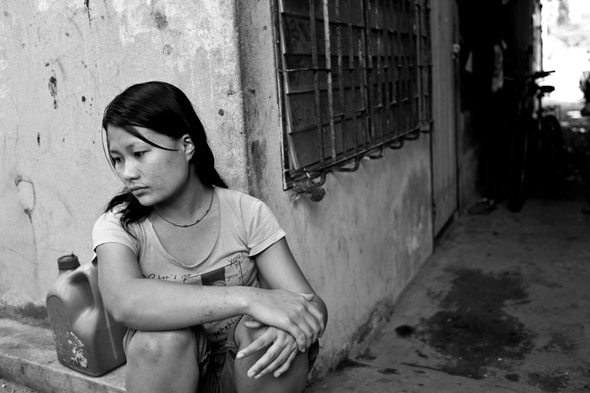Bruce Lee
Mark Twain
Theodore Roosevelt
All Assignments are available here…

This is a picture from a women in Burma. This picture is interesting to me because the women face is showing that she is unhappy that she is not in a healthy place and the struggle that she has to face everyday.
Photo by: Cattleya Jaurthavee
-Bryan Moua
What is Abstract?: An abstract photography is a photo that does not represent the subject in a literal way and communicates based on form, color, and curves rather than the image’s detail. It is also an instinctual art where people react emotionally, not logically. Abstract photo can be shot anywhere that brings contrast to other photographs. There are essentials to abstract photographs from their form, color and curves. The form creates the core of the image while the color and curves add enhancements.
Color: Color grabs the attention of the viewer and stimulates the viewer’s perceptual system of the abstract. Other color methods that makes abstract look dynamic to use contrasting colors from the tonal of the color of a sun setting.
Curves: Curves add interest to an abstract object. It controls the eyes of the viewer the movement of the image’s curves. Curves can serve to direct the viewer’s attention to a color in the picture. Another way that gives the picture its curve is that the image can be intangible to the viewers eyes and deceive that the cures are not at the central of the picture. Instead, the picture is flowing through the image in a graceful way.
Composition: The images of abstract images can be arranged to their respect to each other from the Rule of Third and No Rules. Rule of thirds help the image be on a divided line that helps the image comes to be an interesting sight. No Rules has no rules on taking a picture and doesn’t have a subject to point it towards anything.
Pop art is a design that was introduced in the 1950’s by a group called the Independent Group in London’s Institution of Contemporary Art. It is a art that used different art styles and does not criticize the art but recognizes the persuasive presence of natural art. The movement started in 1956 to the early 1970’s.
Examples of Pop Art:

Link of Tutorial: http://www.photoshopessentials.com/photo-effects/pop-art/
Before/After:
A Photogram is a photographic picture that an image is made without using a camera by placing objects on surfaces like photographic paper onto light.
Two artists that are famous for their work on photograms are Susan Derges and Pierre Cordier.
By: Pierre Cordier
By: Susan Derges
By: Adam Fuss
An idea that I plan to do with Photograms is bring in many objects that are almost see-through and looks nice on black backgrounds.









